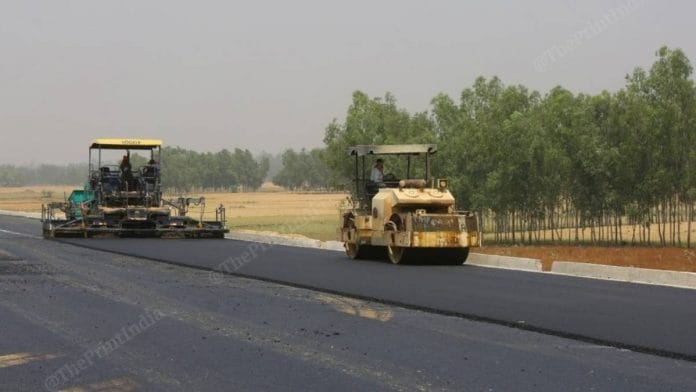New Delhi: In a shift of policy, the Ministry of Road Transport and Highways has decided to cut down on road projects executed under the Engineering Procurement Contract (EPC) framework, where the government provides 100 percent funding. Instead, it is planning to take up more projects under the Public Private Partnership (PPP) mode.
In the PPP model, private concessionaires invest in construction and recover their funds through tolls or installments paid by the highways authority.
Union road secretary Anurag Jain told reporters Thursday that this shift was driven by the need to ensure the quality of both construction and maintenance.
“During our review meeting, we got feedback that the roads built under EPC were not being maintained properly as compared to those built under BOT (Build Operate Transfer) or HAM (Hybrid Annuity Model) — both forms of PPP. There is a clear distinction. Then why should we make more EPC roads?” Jain said.
He said that this fiscal, out of the 1,600 km of highways finalised for execution, only 250 km would be under EPC, with the remainder falling under BOT or HAM.
BOT and HAM are two forms of PPP. In BOT, private concessionaires recover their investments through tolls. HAM, a hybrid PPP model, involves the government providing 40 percent of the construction costs, with developers contributing the remainder.
The road secretary added that the ministry’s internal target is for all projects costing more than Rs 500 crore to be executed under the HAM or BOT models.
“You will see more and more NHAI as well as road ministry projects being taken up in BOT or HAM mode,” he said.
A source in the road ministry said that road minister Nitin Gadkari has in principle agreed to the suggestion to take up more BOT and HAM projects instead of EPC.
Also Read: Railways’ massive Dedicated Freight Corridor nears completion 2 decades later — why it’s a big deal
‘Small contracts will still be given in EPC’
Before 2014, highway development was primarily dependent on the PPP model. However, a slump in the economy saw private players withdrawing from the highways sector. Projects got stuck as banks were reluctant to lend. It was only post 2014 that the government revisited the sector to address the bottleneck and moved from the PPP model to EPC.
However, the EPC model resulted in a significant outflow of government funds that could have been used for other development projects and welfare schemes.
Senior ministry officials said the difference in the quality of construction and maintenance was on account of the incentives that are built in the HAM and BOT mode.
“In both HAM and BOT, developers know that if they don’t maintain the roads properly, they won’t receive their remaining payments from highway agencies that they would have otherwise got over the years,” said an official on condition of anonymity.
However, the official noted that EPC projects would not be entirely phased out.
“Small contracts, of say Rs 400-500 crore, where the complexities are less, will still be given under EPC. If it’s financially viable, they may go under BOT,” he said.
(Edited by Asavari Singh)
Also Read: Many metro projects on anvil, govt works to standardise construction components






